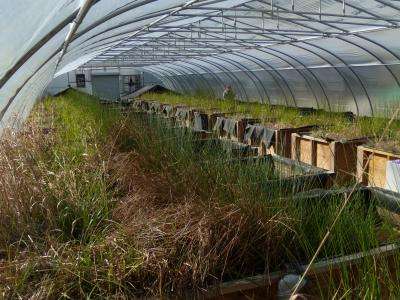Duke wins $15 million renewal to study nanotech safety

A pioneering, multi-institution research center headquartered at Duke's Pratt School of Engineering has just won a $15-million grant renewal from the National Science Foundation and the US Environmental Protection Agency to continue learning more about where nanoparticles accumulate, how they interact with other chemicals and how they affect the environment.
The nanomaterials revolution has made exceedingly tiny engineered particles a hot commodity, used in products from clothing to sunscreen to electronics. But the very properties that make them so useful—vanishingly small size and high surface area—may have unintended consequences as they enter living organisms and the environment.
Founded in 2008, the Center for Environmental Implications of NanoTechnology (CEINT) has been evaluating the effect of long-term nanomaterial exposure on organisms and ecosystems.
"As we look to the next five years, we will be evaluating more complex nanomaterials in more realistic natural environments such as agricultural lands and water treatment systems where these materials are likely to be found," said Mark Wiesner, James L. Meriam Professor of Civil & Environmental Engineering and director of CEINT.
The center has been exploring what happens when materials manufactured at the nanoscale—about 1/10,000th the diameter of a human hair—enter the environment and whether their size and unique properties render them a new category of environmental risk. For example, nanoparticles can be highly reactive with other chemicals in the environment and had been shown to disrupt activities in living organisms. Indeed, nanosilver is used in clothing precisely because it effectively kills odor-causing bacteria.
The center also pioneered the use of a new test chamber, called a mesocosm, that replicates a small wetland environment. "Over the long term, we want to evaluate how nanoparticles bioaccumulate in complex food webs," said Emily Bernhardt, an associate professor of biology at Duke and ecosystem ecologist who helped design the simulated ecosystems. "The additional funding will allow us to study the subtle effect of low-dose exposure on ecosystems over time, as well as complex interactions among nanoparticles and other environmental contaminants."
Provided by Duke University